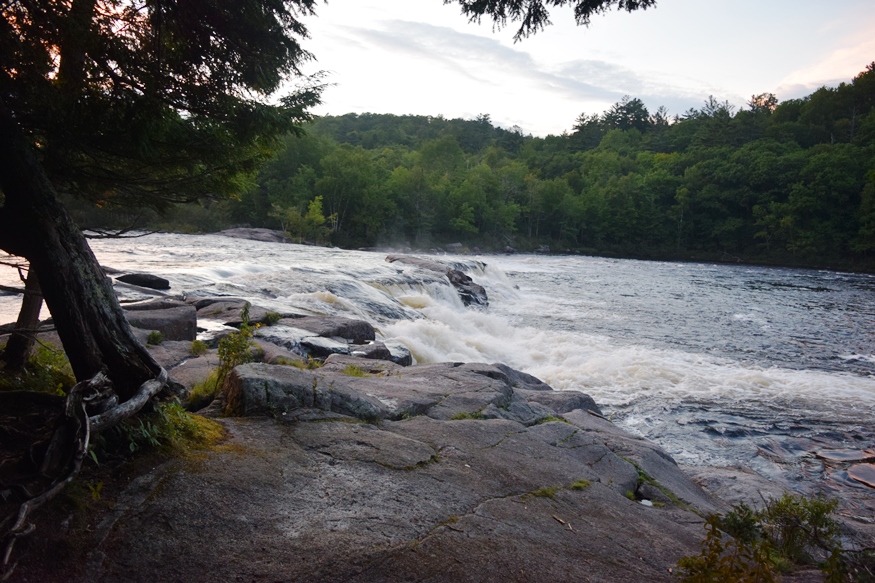As Socrates is said to have urged, on seeking knowledge: “first let us define our terms.”
For early Maine mill owners “falls” were the drop in a stream or river that could be harnessed for power. Rapids also involve drops in a waterway, often with rocks as obstacles to navigation with canoes, kayaks and rafts.
The term “waterfalls” implies a great drop over a short portion of a waterway.
An essay from the Milestone Press suggests the following:
A precise definition of a waterfall is difficult to find. Most dictionaries and encyclopedias refer to a waterfall as a more or less vertical stream of water that flows over the edge of a cliff that has eroded away. A waterfall is also sometimes defined as a cascade of water crossing rocks that have not yet eroded, producing what is commonly known as a rapid, although a cascade is a generic term for any flow of water. A small creek can be said to cascade downstream over rocks. A cascading flow of water can be any height, from a few inches to several hundred feet. Each section of a waterfall is sometimes referred to as a cascade.
Different sources set different minimum heights, ranging from 5 to 20 feet, for descending water to qualify as a waterfall. According to “Maine Waterfalls,” (See below) Maine has about 60 waterfalls of various size and type.
Here are some Maine Waterfalls in the context of their township:
Abol Falls and Nesowadnehunk Falls
Austin Stream Falls, Big and Little Niagara Falls, Little Wilson Falls, The Cascades
The Cataracts , Cold Stream Falls, Grindstone Falls , Screw Auger Falls of Gulf Hagas,
Smalls Falls, Coos Canyon, Dunn Falls, Heald Stream Falls, Moxie Falls,
Additional resources
“Waterfalls: What Defines Them?” milestone press. https://milestonepress.com/waterfalls-what-defines-them/(accessed November 25, 2019)
“Maine Waterfalls.” New England Waterfalls.com. [not secure] http://www.newenglandwaterfalls.com/maine.php. (accessed November 25, 2019)


